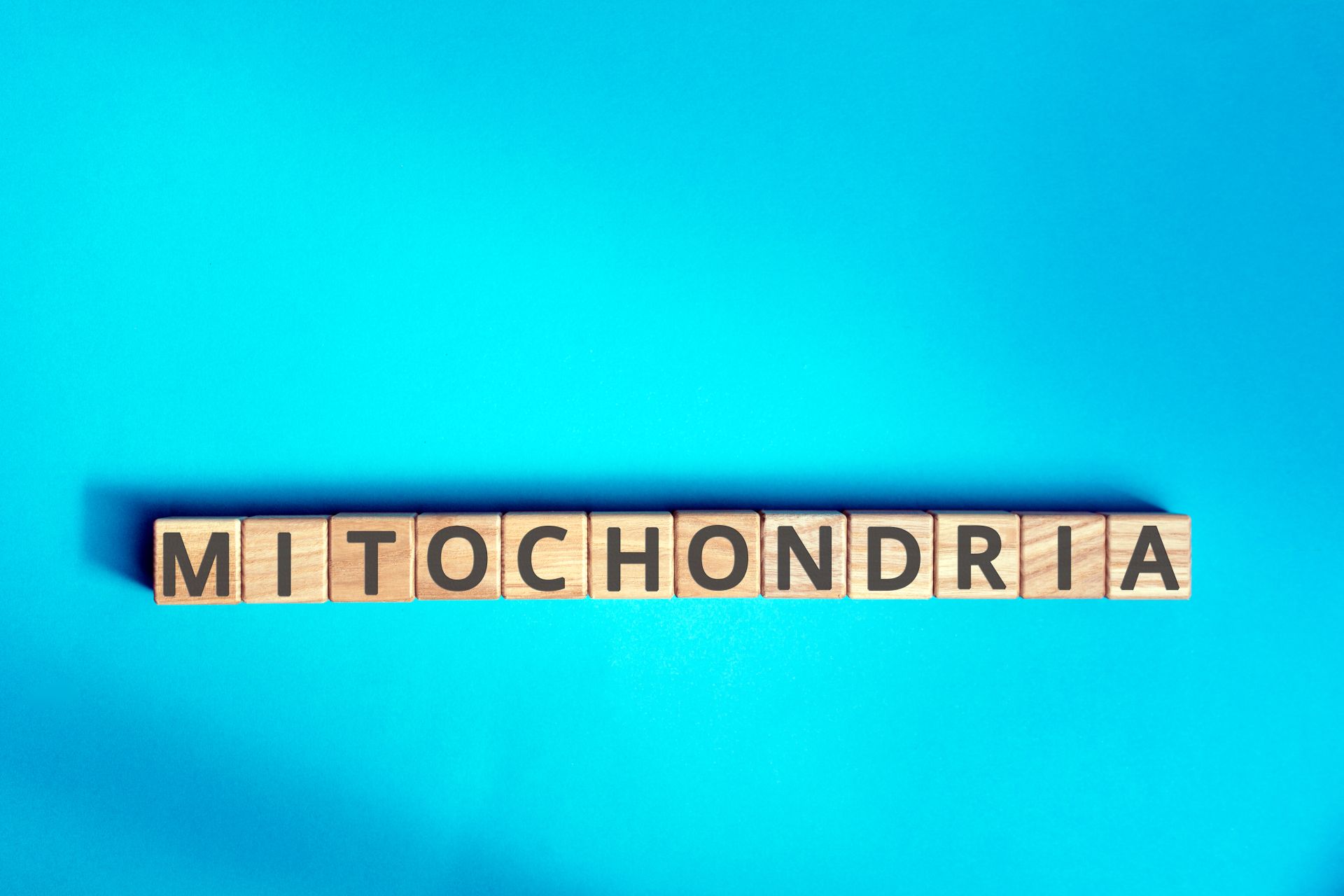Magnesium deficiency - what are the symptoms?

Nutritional deficiencies can do a lot to mess with overall health. Today's food quality and common eating habits unfortunately strongly encourage deficiencies. Magnesium defic iency is one of the most common deficiencies that, fortunately, can be easily corrected and improve your health, as long as you diagnose it and take appropriate action. Find out what magnesium deficiency is and how to supplement it efficiently.
- How common is magnesium deficiency?
- Symptoms of magnesium deficiency
- What are the causes of magnesium deficiency?
- Magnesium supplementation for deficiency
- Cooperation of magnesium with vitamin D
- Look at the entire electrolyte balance
- Diagnosis of magnesium deficiency
- How to supplement magnesium deficiency?
How common is magnesium deficiency?
Magnesiumdeficiency is expertly called hypomagnesemia. Hypomagnesemia is far more common than hypermagnesemia. Analyses of magnesium intake in Europe and North America indicate that the statistical dietary supply of this element does not cover the daily requirement. Some data speak of up to two-thirds of the population (56 to 68%) with an inadequate supply of magnesium in Western society. In Poland, it mostly affects adults, while magnesium deficiency is statistically unlikely to occur in children.
Magnesium deficiency is not uncommon in the general population. Its intake has declined over the years, especially in the Western world. The typical "Western-type diet" is characterized by a low magnesium content of 30%-50% of the daily magnesium requirement. Researchers suggest that magnesium intake in the United States has declined over the past 100 years from about 500 mg/day to 175-225 mg/day. As early as 2005-2006, U.S. data indicated that up to half of Americans were not meeting their daily magnesium requirements.
Hypomagnesemia is defined as a serum magnesium concentration <0.75 mmol/L. Early symptoms of magnesium deficiency are nonspecific and include loss of appetite, lethargy, nausea, vomiting, fatigue and weakness. More pronounced magnesium deficiency manifests with symptoms of increased neuromuscular excitability, such as tremor, lower leg muscle spasm, muscle cramps, tetany and generalized convulsions. Hypomagnesemia can cause cardiac arrhythmias, including atrial and ventricular tachycardia.
Symptoms of magnesium deficiency
Magnesium affects virtually the entire body, so the symptoms of magnesium deficiency are also systemic. Many of them are very general, which could easily be attributed to other disorders by mistake. The following is a list of well-known symptoms of magnesium deficiency. There are so many that they have been sorted into different systems and aspects of health for ease of reference.
General: anxiety, lethargy, weakness, agitation, depression, painful menstruation, hyperactivity, headache, irritability, hearing disorders, low stress tolerance, loss of appetite, nausea, sleep disorders, impaired sports performance.
Muscles: muscle cramps, cramps of the soles of the feet, leg cramps, facial muscles, muscles of mastication and calves, muscle cramps of the lower extremities, back pain, neck pain, urinary tract cramps, magnesium deficiency tetany.
Nervoussystem: nervousness, increased sensitivity of NMDA receptors to excitatory neurotransmitters, migraine, depression, nystagmus, paresthesias, poor memory, convulsions, tremors, dizziness.
Gastrointestinal tract: constipation.
Cardiovascular system: risk of supraventricular or ventricular arrhythmias, hypertension, coronary spasm, reduced myocardial pump function, digitalis sensitivity, torsade de pointes (cardiac arrhythmia, which is a specific variant of multiple ventricular tachycardia), death from heart disease.
Electrolytes: hypokalemia, hypocalcemia, sodium retention.
Metabolism: dyslipoproteinemia (elevated blood levels of triglycerides and cholesterol), decreased glucose tolerance, insulin resistance, increased risk of metabolic syndrome, bone and vitamin D metabolism disorders, PTH resistance, low blood levels of PTH, vitamin D resistance, low blood levels of 25(OH)D, recurrence of calcium oxalate stones.
Miscellaneous: asthma, chronic fatigue syndrome, osteoporosis, hypertension, altered glucose homeostasis.
Pregnancy: complications of pregnancy (e.g. miscarriage, premature birth, eclampsia).
What are the causes of magnesium deficiency?
The causes can vary, and the most difficult to manage are cases where several different causes overlap. Check out what can cause magnesium deficiency.
Poor diet!
This is the most obvious answer. The body cannot have the right amount of magnesium if we supply too little. Keep in mind that this is an element that needs to be supplemented in the daily diet, as we will not make it for ourselves.
One of the reasons for magnesium deficiencies in Poland is our traditional culinary preferences. The typical Polish menu is dominated by bread and dairy products. Dairy products are unfortunately deficient in magnesium. Bread could provide it if it were made from whole grain, while its classic variety made from refined flour provides only trace amounts of magnesium. The same is true of meat and eggs, which are also not conducive to supplementing magnesium in the diet, but which occupy an important place in Polish cuisine.
In addition, the overall diet matters. For example, extreme amounts of protein (less than 30 grams per day, or very large amounts that increase kidney function) make it difficult to maintain optimal magnesium concentrations. Excess phytates in the diet, which bind magnesium ions, are also problematic.

Some medications
And there are quite a few of them. Below is a list of drugs that make it difficult to maintain good magnesium concentrations, along with their mechanisms of action.
| Drug Group (Medicinal Substance) | Mechanism of action |
| Aminoglycosides (e.g., gentamicin, tobramycin, amikacin) | Increased renal loss of magnesium, secondary hyperaldosteronism |
| Antimicrobial drug (pentamidine) | Increased renal loss of magnesium |
| Antiviral drug (foscarnet) | Nephrotoxicity, increased renal loss of magnesium |
| Beta-adrenergic agonists (e.g., phenoterol, salbutamol, theophylline) | Increased renal excretion of magnesium, metabolic disturbances (shift of magnesium into cells) |
| Bisphosphonates (pamidronate) | Kidney damage, magnesium excretion |
| Chemotherapeutic drugs (e.g., amsacrine, cisplatin) | Nephrotoxicity, cisplatin accumulates in renal cortex, increased renal loss of magnesium |
| Immunosuppressants (cyclosporine, sirolimus) | 2- to 3-fold increased urinary magnesium excretion |
| Loop diuretics, especially with long-term use (e.g., furosemide) | Increased renal loss of magnesium, secondary hyperaldosteronism |
| Monoclonal antibody (e.g., cetuximab, panitumumab) | EGFR blockade in the nephron impairs active magnesium transport |
| Polyene antifungal drugs (amphotericin B) | Nephrotoxicity |
| Proton pump inhibitors | Loss of active magnesium absorption by TRPM6/7 |
| Thiazide diuretics, especially with long-term use (e.g., hydrochlorothiazide) | Increased renal loss of magnesium, secondary hyperaldosteronism |
Diseases
Some pathological conditions faced by the body can further deplete magnesium stores, making the patient's condition even worse. Diseases that increase the risk of magnesium deficiency are:
- alcoholism,
- poorly controlled diabetes,
- malabsorption disorders (e.g. due to Crohn's disease, celiac disease, short bowel syndrome, etc.),
- endocrine disorders (e.g., aldosteronism, hyperparathyroidism, hyperthyroidism),
- renal diseases (e.g. chronic renal failure, dialysis, Gitelman syndrome).
Age
With age, the efficiency of magnesium absorption can decrease by up to 30%. Older age also increases the risk of factors from the previous points, namely health disorders and the use of problematic medications.
Uses
Alcohol consumption is a factor that increases the risk of magnesium deficiency. Alcohol increases the excretion of this element from the body, among other diuretic effects. Deficiency is very common in alcoholics. Also, cigarette smoking can reduce the amount of magnesium available.
Magnesium supplementation for deficiency
The effectiveness of oral magnesium supplementation in correcting magnesium deficiency is not controversial. It is well documented in the scientific literature. Effectiveness depends mainly on choosing the right form of magnesium and the right dose.
Organic forms are considered the best for effective magnesium supplementation. They are characterized by very good solubility in water, and thus bioavailability. Among them , particularly noteworthy are:
- magnesium citrate
- magnesium malate
- magnesium lactate
- aspartate
Magnesium chelates such as magnesium diglycinate and magnesium taurate also have a good reputation.
Cooperation of magnesium with vitamin D
Vitamin D is famous as one of the most deficient nutrients, whose deficiencies affect a very large proportion of the population. It turns out that it has an interesting relationship with magnesium, and simultaneous supplementation of both components can be very beneficial.
It has been shown that 1,25-dihydroxyvitamin D (1,25(OH)2D), the biologically active form formed in the kidneys, can stimulate magnesium absorption in the intestines. Thus, the deeper the vitamin D deficiency, the more difficult it is to supplement magnesium deficiency.
On the other hand, magnesium is a cofactor necessary for the binding of vitamin D to its transport protein VDBP(Vitamin D Binding Protein). In addition, the conversion of vitamin D via 25-hydroxylation in the liver and 1α-hydroxylation in the kidney to the active, hormone-like form is magnesium-dependent. Magnesium deficiency leads to decreased 1,25(OH)2D concentrations. Magnesium supplementation can reverse resistance to vitamin D treatment.
Look at the entire electrolyte balance
There is a complex web of relationships between the various electrolytes. When magnesium deficiency occurs, there is a very good chance that something is wrong with the other electrolytes as well. Hypomagnesemia is often accompanied by hypokalemia (potassium deficiency) and hypocalcemia (calcium deficiency). Reduced calcium concentration in the body is even one of the earliest signs of magnesium deficiency and can be considered one of the diagnostic criteria.
Diagnosis of magnesium deficiency
We can perform a blood magnesium test in the laboratory for a few Z£. Is it enough? Not only is it not enough, but it can even mislead. Extracellularly there is no more than 1% of magnesium ions stored in the body, and only about 0.3% of all magnesium stores circulate in blood serum. All the rest is stored in the bones and inside the cells. What's more, the body has sophisticated mechanisms to self-regulate the level of magnesium in the blood to keep its pH at the right level. So even when the concentration of magnesium in the blood is correct, this cannot be considered reliable confirmation of the absence of magnesium deficiency. Instead, blood magnesium testing is very useful in outpatient practice.
In practice, it is best to focus on analyzing a person's symptoms and his or her menu to see if he or she has any chance of getting enough magnesium. Some people also practice simply including magnesium supplementation to see if the symptom profile improves after a few days. This makes sense, as magnesium in adults is very hard to overdose on, and generally supplementation is very well tolerated.
Among the more advanced diagnostic methods, hair elemental analysis is increasingly cited as having the potential to be more reliable than blood concentrations.
How to supplement magnesium deficiency?
The most important thing is, of course, diet. Nuts, whole grain products, green leafy vegetables and legumes should be included in the diet as often as possible. A significant source of magnesium covering up to 10% of your needs is... water. So keep an eye on hydration and drink the recommended amount of at least 2 L of water a day. Sometimes it's a good idea to drink highly mineralized water with a high magnesium content. If necessary , it is a good idea to reach for good quality magnesium supplements.
Sources:
 ⮜ Previous article
⮜ Previous article
7 signs of vitamin D deficiency. Do you have these symptoms?
 Next article ⮞
Next article ⮞


